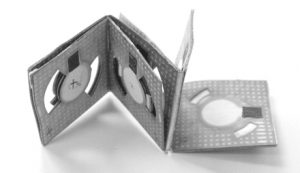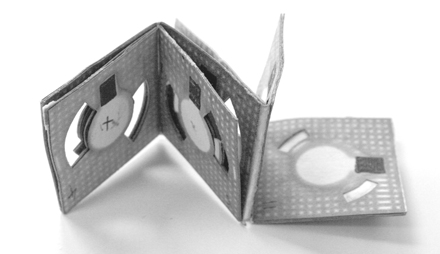You’re probably familiar with that Japanese paper-folding technique called origami. Maybe you’re pretty skilled at the art-form, maybe you don’t have the patience for that nonsense.
Well, one Binghamton University engineer, Seokheun “Sean” Choi, applied the art-form to his studies and came up with a foldable origami battery.

That’s right – a battery constructed with ordinary, run-of-the-mill office paper.
How it works
The battery generates power from microbial respiration and actually delivers enough energy to run a paper-based biosensor with nothing more than a drop of bacteria-containing liquid.
“Dirty water has a lot of organic matter,” said Choi, assistant professor of electrical and computer engineering at Binghamton. “Any type of organic material can be the source of bacteria for the bacterial metabolism.”
The battery uses an inexpensive air-breathing cathode that is created by spraying nickel onto one side of ordinary office paper. The anode is screen printed with carbon paints which creates a hydrophilic zone with wax boundaries.
Not only can the battery folds into a square the size of a matchbook, but the technology only costs about five cents to create. Yes, five pennies.
The future
Choi envisions a self-powered system in which a paper-based battery could create enough energy to run a biosensor. He recently received a three-year grant of nearly $300,000 from the National Science Foundation in order to achieve this goal.
Story via Binghamton University.

